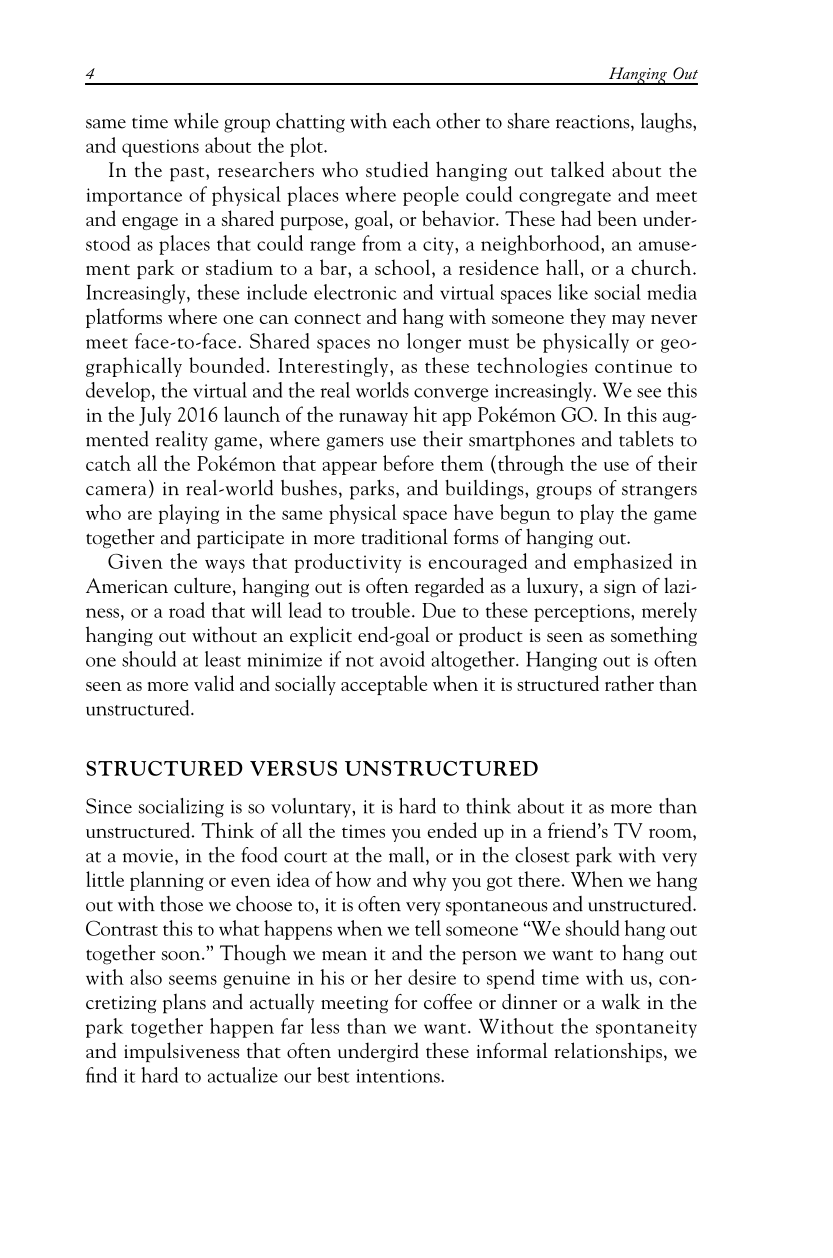same time while group chatting with each other to share reactions, laughs,
and questions about the plot.
In the past, researchers who studied hanging out talked about the
importance of physical places where people could congregate and meet
and engage in a shared purpose, goal, or behavior. These had been under-
stood as places that could range from a city, a neighborhood, an amuse-
ment park or stadium to a bar, a school, a residence hall, or a church.
Increasingly, these include electronic and virtual spaces like social media
platforms where one can connect and hang with someone they may never
meet face-to-face. Shared spaces no longer must be physically or geo-
graphically bounded. Interestingly, as these technologies continue to
develop, the virtual and the real worlds converge increasingly. We see this
in the July 2016 launch of the runaway hit app Pokémon GO. In this aug-
mented reality game, where gamers use their smartphones and tablets to
catch all the Pokémon that appear before them (through the use of their
camera) in real-world bushes, parks, and buildings, groups of strangers
who are playing in the same physical space have begun to play the game
together and participate in more traditional forms of hanging out.
Given the ways that productivity is encouraged and emphasized in
American culture, hanging out is often regarded as a luxury, a sign of lazi-
ness, or a road that will lead to trouble. Due to these perceptions, merely
hanging out without an explicit end-goal or product is seen as something
one should at least minimize if not avoid altogether. Hanging out is often
seen as more valid and socially acceptable when it is structured rather than
unstructured.
STRUCTURED VERSUS UNSTRUCTURED
Since socializing is so voluntary, it is hard to think about it as more than
unstructured. Think of all the times you ended up in a friend’s TV room,
at a movie, in the food court at the mall, or in the closest park with very
little planning or even idea of how and why you got there. When we hang
out with those we choose to, it is often very spontaneous and unstructured.
Contrast this to what happens when we tell someone “We should hang out
together soon.” Though we mean it and the person we want to hang out
with also seems genuine in his or her desire to spend time with us, con-
cretizing plans and actually meeting for coffee or dinner or a walk in the
park together happen far less than we want. Without the spontaneity
and impulsiveness that often undergird these informal relationships, we
find it hard to actualize our best intentions.
4 Hanging Out

























































































































































































































